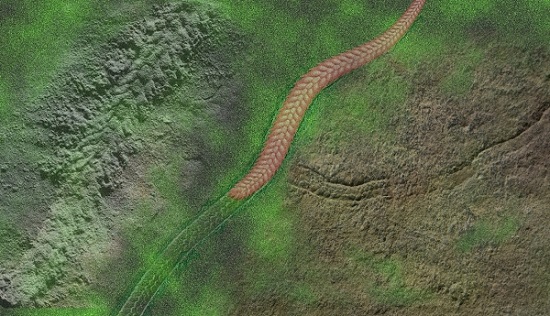The origin of bilaterally symmetric animals with a segmented body plan is a monumental innovation in animal evolution. A research team, led by Prof. YUAN Xunlai from NIGPAS discovered a new segmented bilaterian fossil (Yilingia spiciformis) and extraordinary trace fossils, preserved in ~550-million-year-old rocks in the Yangtze Gorges area, Hubei Province. The newly found fossils unravel critical evolutionary puzzles and roll back the origin of segmented and bilaterally symmetrical animals by at least 10 million years. The trace fossils record complex behaviors and reflect short-term fluctuations of dissolved oxygen levels in the bottom sea water. The appearance of motile animals in the Ediacaran Period has profound environmental and ecological impacts on the Earth surface system and ultimately led to the Cambrian substrate and agronomic revolutions. The researches were published in Nature and Geology this year.
Reference: CHEN Zhe, ZHOU Chuanming, YUAN Xunlai*, XIAO Shuhai*. 2019. Death march of a segmented and trilobate bilaterian elucidates early animal evolution. Nature 573: 412-415. DOI: 10.1038/s41586-019-1522-7.
XIAO Shuhai*, CHEN Zhe, ZHOU Chuanming, YUAN Xunlai*. 2019. Surfing in and on microbial mats: Oxygen-related behavior of a terminal Ediacaran bilaterian animal. Geology 47: 1054-1058. DOI: 10.1130/g46474.1.

Body fossils (right), trace fossils (left) and reconstruction (middle) of Y. spiciformis
